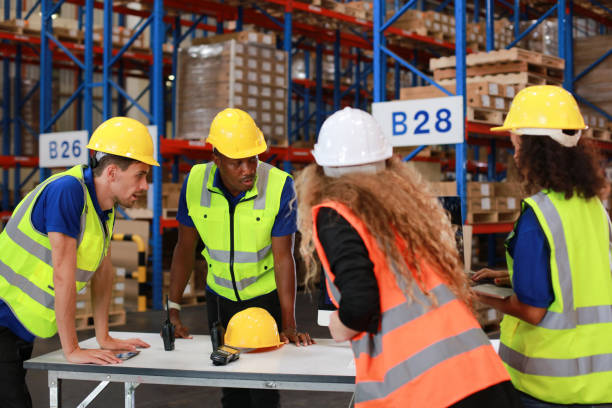Warehouses are critical hubs for storage, distribution and logistics operations, handling a wide range of goods and materials. However, the complex environment of warehouses also presents inherent risks to workers, including hazards associated with heavy machinery, material handling and storage methods.
To minimize these risks and ensure the health of workers, the most important thing is to take appropriate safety measures, such as the use of personal protective equipment (PPE).
This article presents some strategies for maintaining workplace safety in warehouses and introduces various types of PPE.
1.Conducting Regular Inspections:
Warehouse safety begins with identifying potential hazards and addressing them proactively. Regular inspections of the facility, equipment, and storage areas help identify safety hazards such as trip hazards, obstructions, faulty machinery, and inadequate lighting. Managers should develop structured inspection checklists and schedules to ensure thorough assessments and timely corrective actions.
Training and Education:
2.Comprehensive Safety Training:
All warehouse personnel, including new hires and seasoned employees, should undergo comprehensive safety training programs tailored to their specific roles and responsibilities. Training topics may include proper lifting techniques, equipment operation, emergency procedures, and hazard recognition. Regular refresher courses and safety drills help reinforce knowledge and promote adherence to safety protocols.
3. Personal Protective Equipment (PPE):
Personal protective equipment plays a critical role in safeguarding warehouse workers from occupational hazards. Depending on the nature of their tasks, employees may require PPE such as hard hats, gloves, high-visibility vests, and steel-toed boots. Warehouse managers should assess the specific PPE needs of their workforce and ensure that appropriate equipment is provided, maintained, and worn consistently.

1.Head Protection:
Head injuries are a significant concern in warehouse environments due to the potential for falling objects, collisions with equipment, and overhead hazards. To safeguard against such risks, workers should wear protective helmets. Hard hats provide impact protection against falling objects and are typically required in areas where there is a risk of head injuries from materials handling equipment, stacked goods, or low-hanging structures.
2.Hand Protection:
In warehouses, hands are susceptible to a variety of hazards, including cuts, abrasions, chemical contact or thermal injuries. To reduce these risks, workers should wear safety gloves when handling materials, operating machinery, or coming into contact with hazardous substances. The choice of gloves should take into account factors such as the type of task, the nature of the hazard present and the dexterity required. Protective gloves commonly used in warehouses include cotton gloves for general handling, cut-resistant gloves for sharp objects, chemical-resistant gloves for handling hazardous substances, and insulated gloves for thermal protection during refrigeration operations.
3.Foot Protection:
Foot injuries such as falls and crush injuries are common in warehouse environments because of potential hazards such as heavy equipment (transportation machinery) and falling objects. To protect against such risks, workers should wear appropriate safety footwear. Steel-toed boots provide impact protection against crush injuries, while non-slip rain boots increase stability on slippery surfaces.
Personal protective equipment (PPE) plays an important role in warehouse work safety. By providing employees with the necessary PPE and ensuring its proper use, employers can minimize the risk of injury and create a safer work environment.
At the same time, PPE should not be used as the only means of protection; suitable safety management systems are also needed to promote a safety culture and prevent workplace accidents.
Copyright © Hebei Sinotools Industrial Co.,Ltd. All Rights Reserved | Powered by  Sitemap
Sitemap